
We're counting down to the release of Marvel's eagerly anticipated Avengers: Infinity War with our Marvel movie challenge.
Watch one Marvel Cinematic Universe (MCU) movie a week from now until Infinity War's release on 27th April, and you'll be up to speed on all the blockbusters in the MCU so far.
We're continuing with the debut of a certain shield-sporting superhero in Captain America: The First Avenger...
The story
Steve Rogers, a rejected military soldier, transforms into Captain America after taking a dose of a ‘Super-Soldier serum’. But being Captain America comes at a price as he attempts to take down a warmonger named the Red Skull and a terrorist organisation bent on world domination…
The background
Of all their front-bench superheroes, Marvel were probably most nervous about bringing Captain America into the MCU. If done wrong, Captain America, with his uncomplicated sense of patriotism, could have been seen as a bit of an anachronism in 2011. Corny, dated, offensive even. The US was, at the time of release, facing a hurricane of criticism over its foreign policy, and there was a real possibility that a movie titled Captain America would have been scorned overseas.
It’s no accident that this film is the only Marvel origin story with a subtitle. That subtitle allowed Marvel to drop the potentially controversial ‘Captain America’ in territories that were perhaps less friendly toward the US (as it did in Russia, Ukraine and South Korea).
In the end, Marvel got the character so bang-on, that any fears that audiences would reject him proved mercifully unfounded. The film became not a celebration of America, but a celebration of the values of freedom and decency, which in a post-9/11 world struck a chord with audiences all over the globe.
Choosing to set the movie in the Second World War gave Captain America: The First Avenger a fresh and distinct identity apart from the other four MCU films. It was also a direct nod toward the character’s wartime roots (Captain America was created in 1941 by writer Joe Simon and artist Jack Kirby), and allowed Marvel to broaden their narrative canvas.
Joe Johnston proved an inspired choice as director. Johnson had, 20 years before, helmed The Rocketeer, another movie with a pulpy, Boy’s Own spirit, and Captain America has a similarly unironic, celebratory tone. It helps that Chris Evans (in his third superhero movie after the two Fantastic Four films) is such a good fit. It’s a tough job to be wholesome without being corny, but Evans nails it with ease.
Standout performance
As much as we love Chris Evans, we’re giving a shout-out to the wonderful Hayley Atwell, who plays the spunky Peggy Carter.
“She can do everything Captain America can do,” Atwell has said, “but backwards and in high heels. She's an English soldier through and through, although she always looks fabulous. She might stand there with a machine-gun shooting Nazis, but she's obviously gone to the loo beforehand and applied a bit of lipstick. She doesn't need to be rescued."
It’s fantastic to see a female character so tough and so feminine at the same time. In fact, Peggy Carter proved such a popular character Marvel gave her her own spin-off TV series in 2015.
Best special effect moment
It’s a real how-did-the-do-that effect for the movie’s first half-hour when we see Steve Rogers in his puny, sickness-ravaged days. Amazingly, it’s Chris Evans’ real body in those scenes, not a weedy body double. The effects were done by an LA-based company called LOLA, that specialises in digital "plastic surgery", shrinking Evans’ real 6’, gym-honed body into one that would barely pass muster with the TA, let alone the US Army.
Best scene
It's a really powerful scene when Steve emerges from the super-soldier treatment, taller and pumped up. Incidentally, the moment where Peggy prods Steve’s new pecs was improvised by Hayley Atwell on set.
Best quote
“Whatever happens tomorrow you must promise me one thing. That you will stay who you are. Not a perfect soldier, but a good man.” – Dr. Abraham Erskine
The soundtrack
Marvel has something of a spotty history with its accompanying scores, various themes and ideas drifting in and out with a revolving door of composers. It was arguably Back to the Future’s Alan Silvestri who set the benchmark with his thunderous and rousing First Avenger score, one clad in all the warm, noble patriotism we’d expect from Chris Evans’ Star Spangled Man. Plus, it has an actual fantastic, memorable theme – more like this in the Marvel Cinematic Universe, please.
Stan Lee cameo
Despite Cap not being one of the superheroes he created, The First Avenger still finds time to include an appearance from Stan the Man. In this one, Stan’s a guest at an event to honour Captain America, only Cap doesn’t show up. As an aid comes out from behind the curtain to explain, Lee mistakes him for the real thing, remarking, “I thought he’d be taller!”
Post-credits sequence
Did you know?
The red dress that Peggy wears in the film was designed by Anna B. Sheppard for Mélanie Laurent in Quentin Tarantino’s Inglourious Basterds, but never wore in that film.
Captain America co-creator Joe Simon was asked to cameo in the movie, but was too ill. He died five months after the movie premiered at the age of 98.
Watch closely and you’ll spot future Doctor Who companion Jenna Coleman as Bucky Barnes’ date to the World’s Fair.
The Captain America comic book shown in the movie bears the cover of the actual Captain America #1 released in 1941.
Where have I seen him before?
Captain America: The First Avenger actually marks Cap’s FIFTH screen outing. The first was the slightly shabby 40s serial Captain America, the second was a 1979 TV movie and then its sequel (check out the costume, it’s TERRIBLE!), and its fourth was the low-budget theatrical movie Captain America, starring Matt (son of JD) Salinger.
Random observations
Shoutouts to Hugo Weaving, Stanley Tucci and Toby Jones who all give bravura performances, Weaving in particular as Cap’s Nazi foe, the Red Skull.
The movie contains what’s not just the best final scene of a Marvel movie, but one of the best ever scene in movies, period when Cap wakes up in the present day and runs into a 21st century Times Square.
The movie introduced Hydra to the MCU. Although the organisation seemed to be eliminated by the end of the movie, it makes a modern day return in the sequel, Captain America: The Winter Soldier.
Dominic Cooper stars as a younger version of Howard Stark, father of Tony, a role he’d play again in the Agent Carter spin-off series. "I know the guy who becomes my son and I see myself as an older version in Iron Man 2 which is great for an actor to have those tools,” Cooper said at the time. “All I know of him is that he's a fantastic engineer and inventor and a very slick Howard Hughes type that's into aviation and women!"
What the critics said
“I enjoyed the movie. I appreciated the 1940s period settings and costumes, which were a break with the usual generic cityscapes. I admired the way that director Joe Johnston propelled the narrative. I got a sense of a broad story, rather than the impression of a series of sensational set pieces.” Rogerebert.com
“Charming, handsome and full of pep all 70 year-old Cap lacks is a knockout blow. Still, Johnston should be saluted for old-fashioned heart in a cynical age.” Empire
“Evans is unprecedentedly touching and engaging for a superhero - and the rest of the cast help this adventure seem something close to character-driven instead of just being a bundle of stunts.” Evening Standard
“The heart and soul of the movie rests with Hayley Atwell's Peggy and Evans' Steve. Their dynamic gives Marvel their most believable and satisfying romantic coupling on the big screen yet. Atwell's understated work, coupled with Evans' ability to find the right amount of emotional credibility in any scene, gives First Avenger an emotional centre not usually found in these movies.” IGN
“Captain America in his own simple way embodies much of what's noble and good about humanity. That’s not boring, it’s awesome.” CinemaBlend
Next time: Marvel’s Avengers Assemble
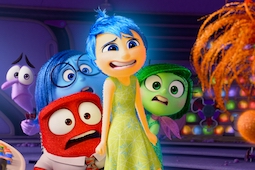


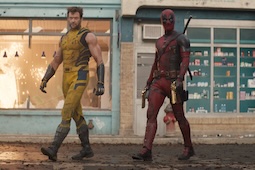
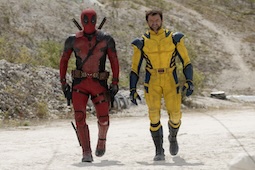
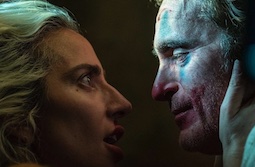
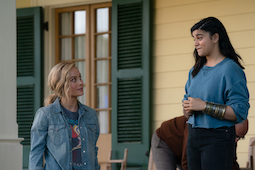
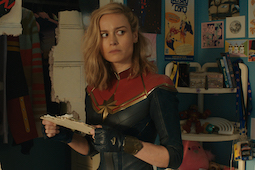
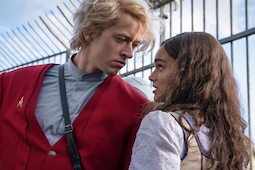



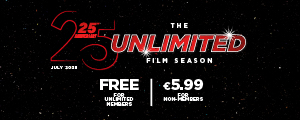
.jpg)
.png)



